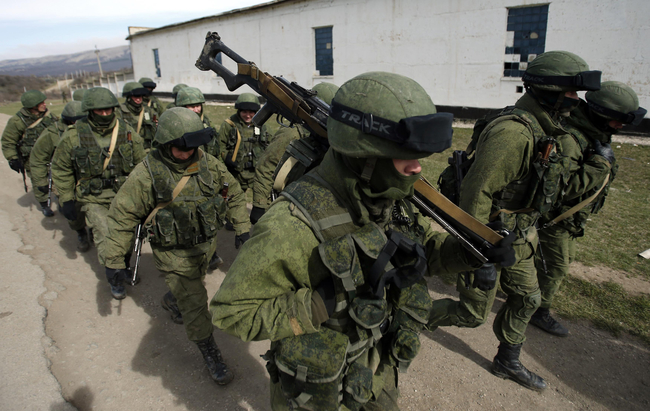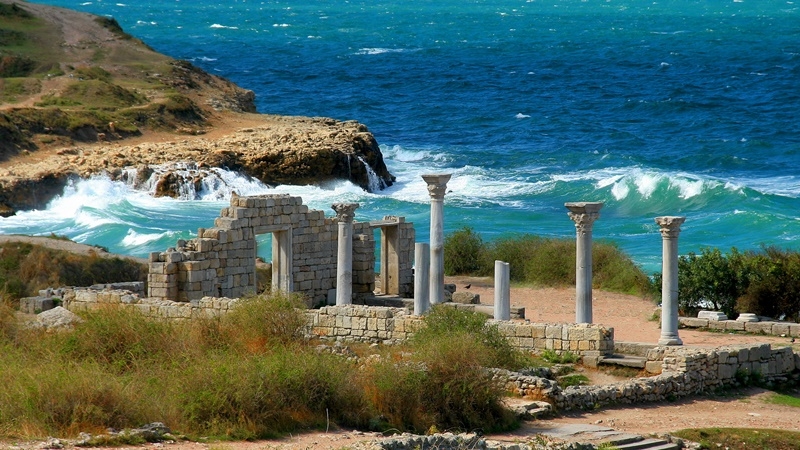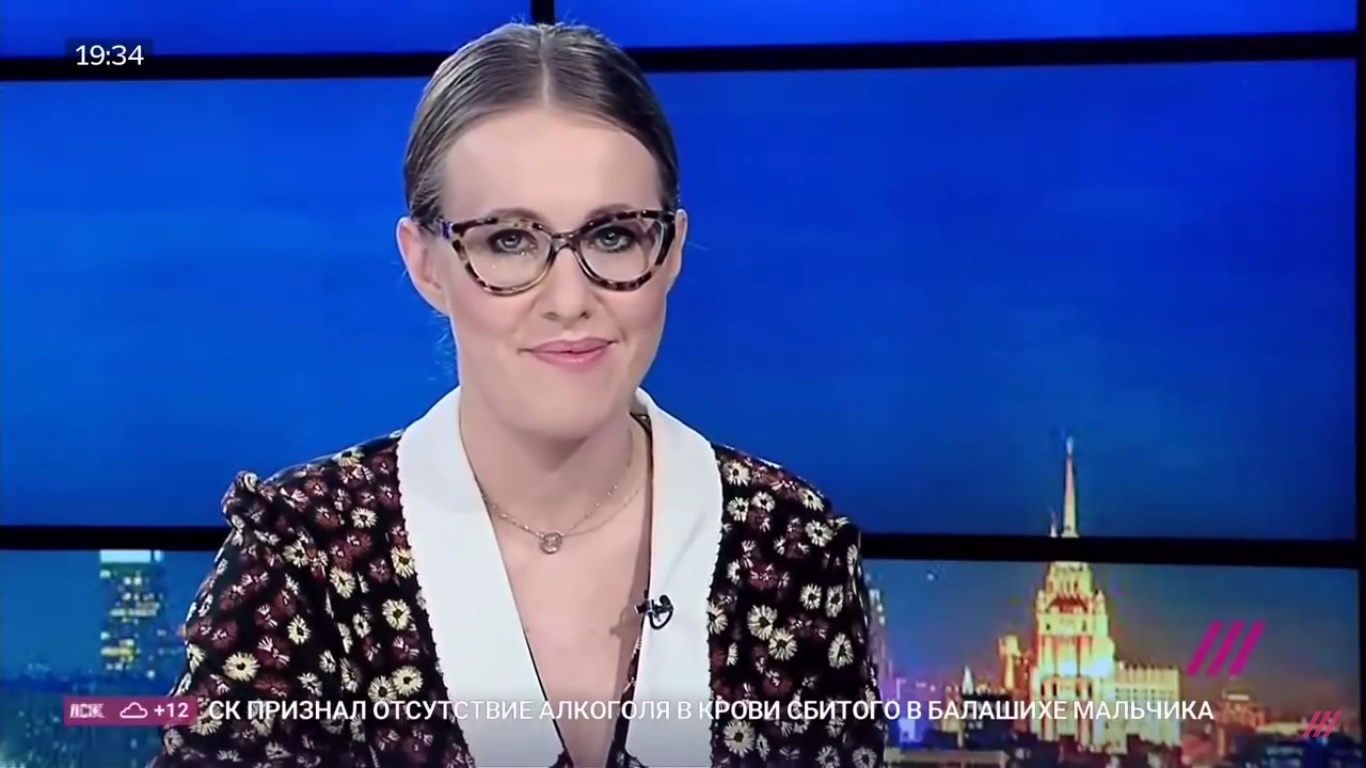- Read more about the meaning of the recent intermediary decision here: Ukraine wins crucial round against Russia over Crimea in the European Court of Human Rights
As Ivan Lishchyna, Ukrainian Representative at the European Court of Human Rights and Deputy Minister of Justice of Ukraine, noted during an online meeting dedicated to the case, Ukraine worked on the evidence base for almost four years. Thus, the team presented together all proof of both the Russian occupation of Crimea by force and human rights violations there.
The case lists and explains all events that prove why Crimean occupation was not “the expression and protection of the will of Crimeans” as the Russian side claims. The case also brings together all human rights violations that Russian occupation forces conducted in 2014-2015. Here are the main takeaways from the evidence presented.
The full description as well as references and supporting facts were included in the description of the court decision regarding applications № 20958/14 and 38334/18.
Who occupied Crimea?
1. The most active role in the blockade of Ukrainian military bases and infrastructure seizure was played by so-called “little green men,” wearing military uniform but having no identification emblems or flags on it.
In 2010, four operational brigades of elite troops with modern weaponry and equipment were formed in the territory of the Russian Federation.
In November 2013, they were attached to the Southern Operational Command of the Russian Armed Forces. Formally, they were created to ensure safety during the twenty-second Olympic Winter Games in Sochi. Subsequently, these military forces were moved to Crimea and participated in the occupation.
Being among the first Russian units to be fitted in the new uniform, they were euphemized as the “little green men” or “polite people.”
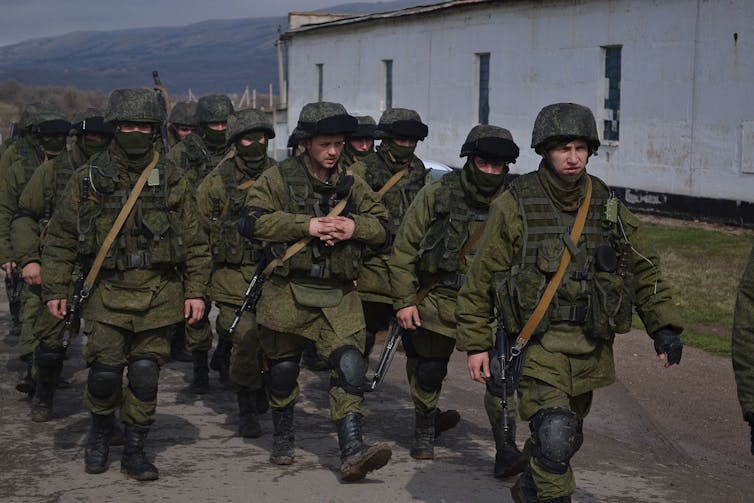

2. From late 2013 onwards, pro-Russian paramilitary actors, including members of the disbanded Berkut Elite Police Unit loyal to former Ukrainian President Yanukovych, began to organize into the Crimean Self-Defence Forces (CSDF).
The Russian President Vladimir Putin, in comments to journalists, dated 25 September 2017 asserted that
“behind the backs of the Crimean self-defence units, there were our soldiers. They acted in a very polite, but decisive and professional manner. There was no other way to help the people of Crimea to express their free will.”
Not only was CSDF supported by Russian regular military units, it was also armed with Russian weapons.
In particular, on 15 March 2014 – that is, the day before the so-called “referendum” – representatives of the Russian FSB issued AK-74s and ammunition to the CSDF, who then were ensuring “safety” during the referendum.
3. Regular Russian military units were illegally entering Crimea throughout the whole month before seizing power on the peninsula on 27 February, as well as during and after seizure, blocking Ukrainian naval forces, Ukrainian military bases and preventing the transfer of Ukrainian military from the mainland to the peninsula.
However, as for 1 January 2014, the maximum number of Russian troops permitted in Crimea was 10,936. The express consent of Ukraine’s Ministry of Foreign Affairs was required for the deployment of additional troops or equipment and for the movement of troops outside of the designated military bases.
On 24 January 2014, a month before the annexation, the Russian Federation began to strengthen its military presence in Crimea by transporting troops by air, land, and sea, without any consent from the Ukrainian side, thus violating bilateral agreements.
For example, in late January 2014, transport aircraft brought contingents of paratroopers to the Russian BSF naval base in the village of Gvardiyske.
On 2 February 2014, nine military aircraft transported further unauthorised military personnel to the airbases at Kacha, Gvardiyske and Khersones. On the same day Russian troops arrived at the ports of Kerch, Feodosiya, Ordzhonikidze and Sevastopol. Up to eight large landing crafts, unloading further unauthorised troops, entered the ports of Kerch, etc.
On the night of 22 to 23 February 2014, during a meeting with the heads of security agencies, the President of the Russian Federation Vladimir Putin said that he had taken
“the decision to start working on the return of Crimea to the Russian Federation.”
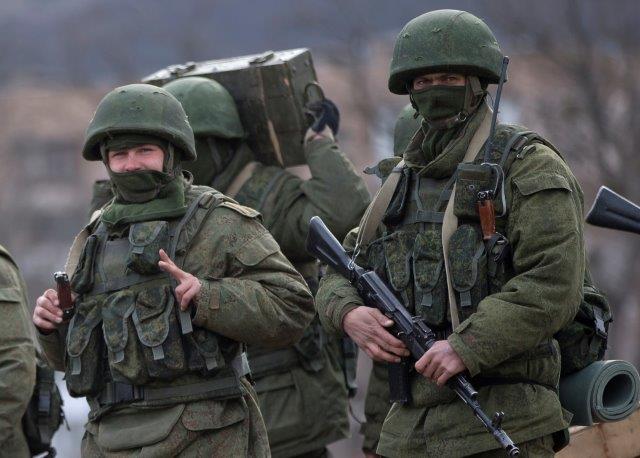
Seizure of the Supreme Council of Crimea and key infrastructural objects on 27 February by Russians
27 February 2014 was the date of seizure, and start of Russian effective control over the peninsula, as claimed by the Ukrainian side and recognized by the court.
On 27 February 2014, over 100 heavily armed men stormed the buildings of the Supreme Council and the Council of Ministers of the Ukrainian Autonomous Republic of Crimea. Footage of this operation shows heavily equipped uniformed soldiers entering the buildings at 4.30 a.m. The Russian flag was raised above the parliament building, Russian soldiers guarded its perimeter, and snipers took up positions on the roof.
According to a letter dated 28 November 2016 from the Prosecutor General’s Office of Ukraine, 100 military men who participated in the seizure, armed with automatic rifles, sniper rifles, machine guns and grenade launchers,were from the 45th special separate regiment of the Air Forces of the Russian Federation and the 7th guards airborne assault (mountain) division of the Air Forces of the Russian Federation.
Despite being dressed in civilian and special clothing, the soldiers were fully equipped.

Forcibly assembled as supervised by armed Russian military personnel, cut off from outside communications and without the requisite quorum, the members of the Crimean Supreme Council adopted resolutions expressing no confidence in the President of the Crimean Council of Ministers, Mr Mogilev, who dismissed all of the individual members of the Council. Mr Aksionov was then appointed as its head, deciding to conduct a referendum in Crimea.
On the same day, the Russian Federation further dramatically increased its direct military presence in Crimea, without notifying Ukrainian authorities. Tugboat Azov delivered a further 300 Russian troops to Crimea and around 200 troops landed aboard the vessels Turbynyst and Zhukov.
In the late afternoon 4,500 troops arrived at the Gvardiyske airfield on nine separate military flights. The Ukrainian border guard was prevented from carrying out the necessary inspections.
Russian troops involved in the blockade of Ukrainian military
Not only pro-Russian paramilitaries but also regular Russian troops were involved in the blockade of Ukrainian military bases as well as transport links, to prevent transfer of Ukrainian military from the mainland (airports, sea ports, land roads). For example,
- thirty troops from the Russian 76th Guards Paratrooper Division and 3rd Guards Special Purpose Brigade surrounded the perimeter of the military unit A3009 “D” of the Air Forces of Ukrainian Armed Forces.
- Russian troops, accompanied by members of the CSDF, blocked access to the airport at Simferopol, the ports of Feodosiya and “Krym–Kavkaz”, the headquarters of the Ukrainian Naval Forces in Sevastopol.
- 300 troops of the Russian 810th Marine Brigade and 76th Guards Paratrooper Division, along with three armoured vehicles and two armoured “Tiger” military trucks blocked the Belbek military airport, home of the A4515 military unit.
Thus, by nightfall on 27 February 2014, the legitimate civilian authorities in Crimea had been removed by Russian military.
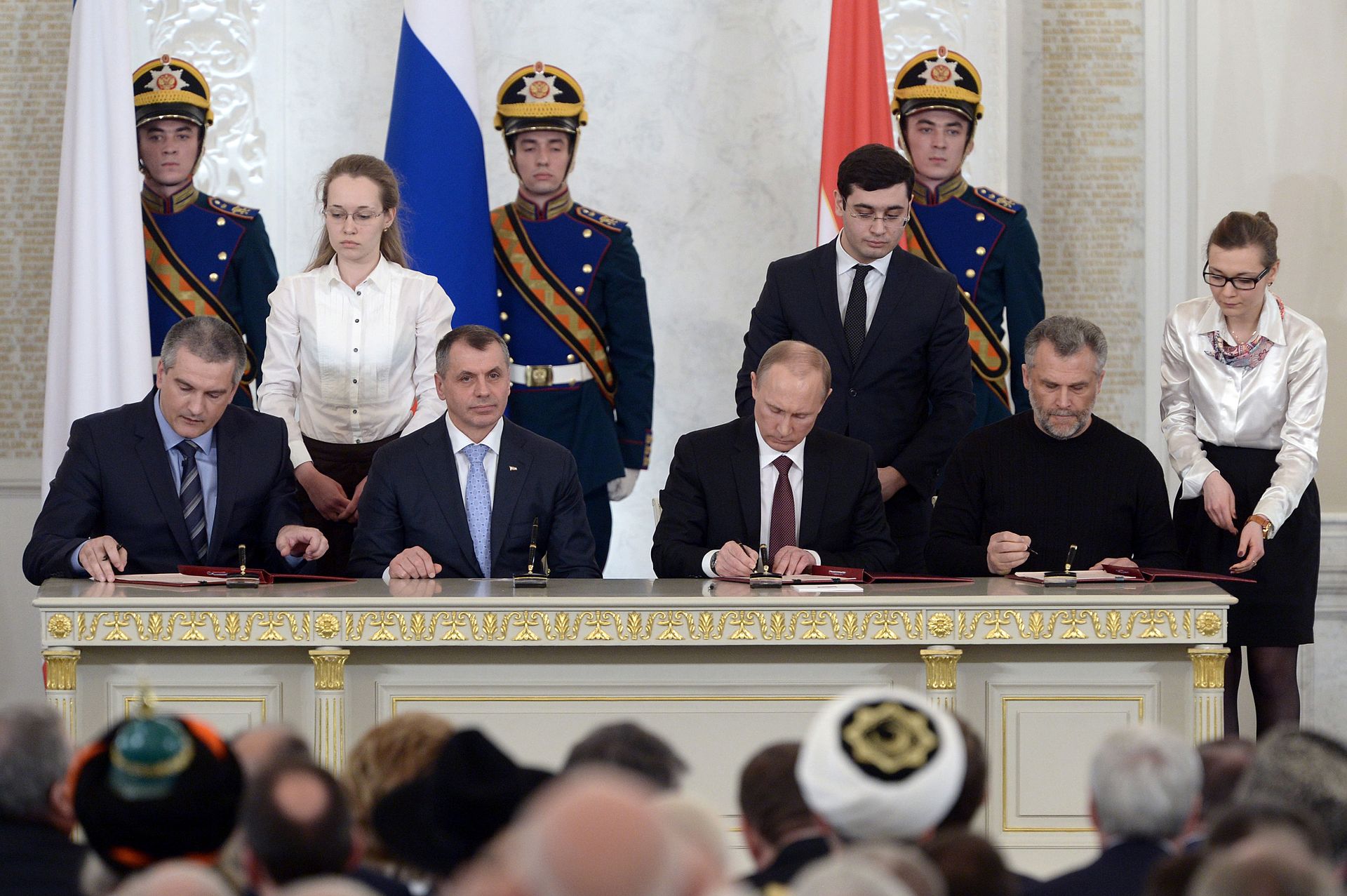
Further deployment of Russian troops to Crimea
Immediately after the events of 27 February 2014 Russia further strengthened its military control over Crimea by illegally deploying even greater numbers of troops and further “incapacitating” the Ukrainian military. Ukrainian ships were blocked by the Russian BSF.
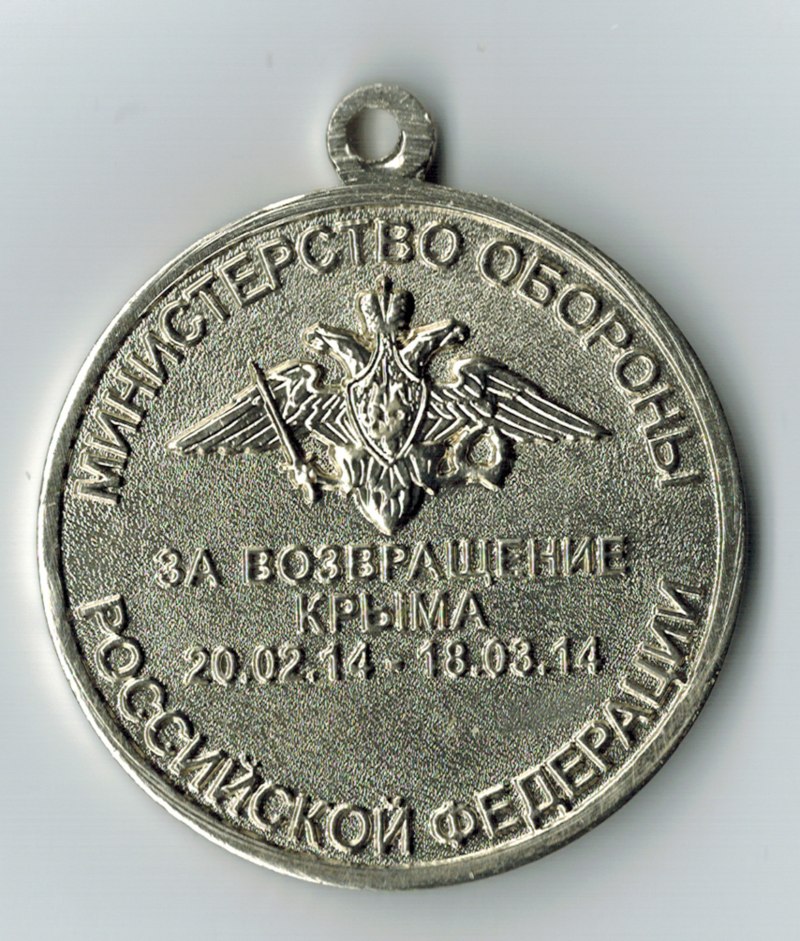
After the annexation, the Ministry of Defence of the Russian Federation awarded a State medal “For the return of Crimea” to the troops of the CSDF. The date on the medal, which demonstrates the beginning of the annexation, is 20 February 2014.
The evidence submitted by Ukraine includes a detailed chronological list of all troop movements between Russia and Crimea as well as inside Crimea.
Cogency of Ukrainian evidence resulted in relatively quick recognition of Russian effective control over Crimea by ECtHR

As Dr. Marko Milanovic, professor of international public law at Nottingham University, explained during the webinar on Ukraine vs. Russia case in the ECtHR, the court’s decision regarding Russian effective control over the peninsula since 27 February is already a big success for Ukraine.
In many similar cases, particularly regarding Georgia, the court didn’t come up with such an explicit decision. Generally, ECtHR’s task is the protection of individuals and the court is reluctant to make distinct statements regarding interstate disputes:
“Usually, it is extremely difficult for ECtHR to consider such cases. Some judges sitting in France should determine what happened in some villages in eastern Ukraine or Crimea. Moreover, they are presented with two opposite narratives from Russia and Ukraine…
The most problematic question is that of sovereignty over Crimea. Should the ECtHR, whose main goal is to protect individuals, decide on interstate disputes? It is likely that Russia will try to sabotage the court or to withdraw from the Council of Europe if the court establishes that Russia had effective control over the peninsula since the time of occupation. Certainly, judges don’t want such a reaction… It is already a success for Ukraine to receive a decision on effective control.”
1. Unlawful detentions, ill-treatment and torture
During the first days of occupation, Ukrainian soldiers and activists who tried to resist were unlawfully detained. They were kept in two principal facilities: the Ukrainian Military Commissariat in Simferopol, taken by force by the CSDF on 8 March 2014, and the BSF Military Prison.
The hostages were often kept blindfolded, in an underground detention cell, where many of them underwent torture including beatings, electrocution and other forms of abuse. In BSF Military Prison, detainees were kept incommunicado, interrogated by Russian officers wearing balaclavas, ill-treated, and subjected to mock executions.
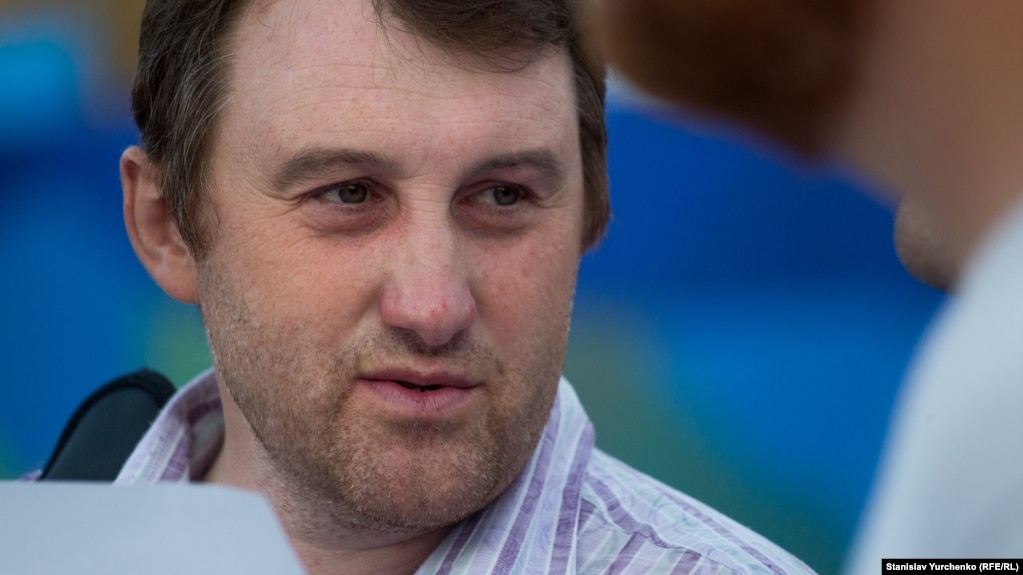
For example, Andrii Shchekun, the leader of the Crimean Euromaidan, was kidnapped on 9 March 2014 by the CSDF and handed over to people in civilian clothes and balaclavas, who took him to a van, blindfolded him with duct tape and took him to an unknown building, which in all probability was the Commissariat.
There he was held for eleven days. He was blindfolded throughout this period, beaten, cut with a knife, electrocuted several times, fired at from a pneumatic gun (about twenty shots), forced to sit naked on a chair in a cold room with hands and feet tied to the chair by tape, and deprived of food and sleep. The interrogators demanded information about his alleged grant financing from the United States and Canada. Following his release, Mr. Shchekun was treated by Ukrainian doctors, who confirmed that he had been subjected to torture.
Public activist Anatoliy Kovalskyi was similarly blindfolded, beaten, threatened and subjected to psychological pressure. Shchekun and Kovalskyi stated that there were approximately fifteen other inmates who were held with them in the same inhuman conditions and subjected to torture. After several failed attempts at negotiation, they were eventually released on 20 September 2014.
2. Dissapearence and murder of Ukrainian activists
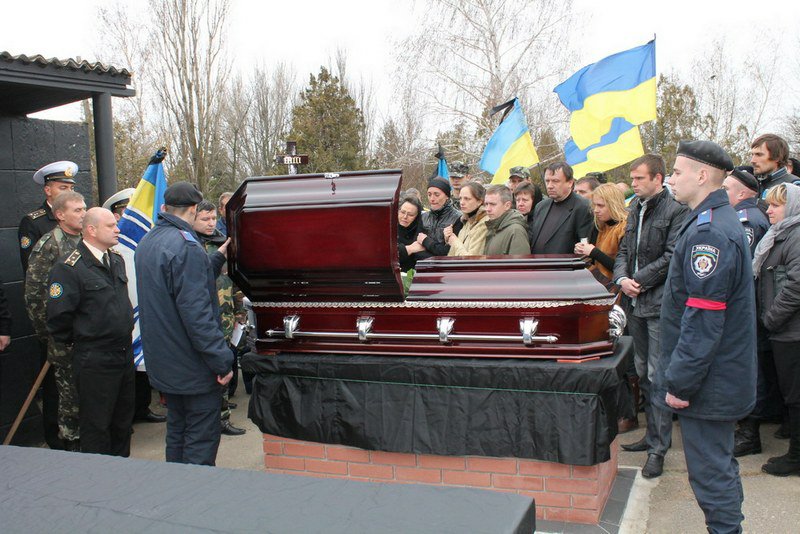
On or around 10 March 2014 the CSDF, local collaborators and the Russian security services launched a campaign of kidnappings of Ukrainian and Tatar activists. Amongst numerous examples, on 15 March 2014, Vasyl Chernysh, an Automaidan activist, disappeared. Several days before his disappearance, he had assisted in the release of two other automaidan activists, O. Ryazantseva and K. Butko, who had been kidnapped by members of the CSDF.
After 21 March 2014, the campaign of human rights violations intensified. In her annual report for 2014, the Russian Ombudsperson, Ella Pamfilova recorded that following the Russian occupation she had received reports of thirteen cases in which Crimean Tatars had disappeared and twenty-four in which Ukrainians had disappeared. The real number, however, could be much higher, since the Russian authorities failed to investigate cases of disappearance, and would not permit international human rights monitors access to the territory.
Among the most notorious and investigated examples of such disappearances (and likely murders) was the murder of Major Stanislav Karachevskyi on 6 April 2014 in the village Novofedorovka in Crimea, in a hostel of the Ukrainian military personnel. He was shot by Russian soldiers.
3. Suppression of independent media
Suppression of independent media was an important tool utilized during the Russian occupation. News agencies were raided and a television broadcaster shut down. On 1 March 2014, all Ukrainian television channels except ATR were banned from Crimea. Ukrainian channels were jammed by the Russian army, in order to prevent them from broadcasting into Crimea. They were replaced by Russian TV-channels. A popular practice of Russian persecution was to conduct searches and convict people for posts on social networks, often dating back to before the occupation.
4. Suppression of religious freedom
Priests of Christian confessions other than the Russian Orthodox Church were forced by the CSDF to leave Crimea. For example, priests of the Ukrainian Greek Catholic Church Mykola Kvych and Bohdan Kostetskyi were threatened and had to leave Crimea already during the first days of the occupation. Overall, four out of six Greek Catholic Church priests had to leave Crimea. Most of the twenty-three Turkish imams and teachers on the peninsula have also left the peninsula.
Parishioners of Christian confessions other than the Russian Orthodox Church were similarly targeted and precluded from entering their churches.
The unlawful expropriation of churches and other religious property has been enshrined in State practice. On 11 November 2014, the “Council of Ministers of the Republic of Crimea” adopted “resolution” no. 437, requiring the “handover to religious organisations of property for religious use which is in the public ownership of the Republic of Crimea”. That “resolution” created preconditions for the seizure of property of those religious organisations which were not loyal to the current occupation authority of Crimea.

5. Raids on private homes of activists
The OHCHR estimated that up to 150 police and FSB raids of private houses, businesses, cafés, bars, restaurants, markets, schools, libraries, mosques and madrassas (Islamic religious schools) had taken place in Crimea in 2014-2016. The raids were often connected to the charges of “extremist” for pro-Ukrainian public expressions or use of Ukrainian flags, participation in the banned after the occupation NGOs.
6. Restrictions on movement and forced deportation, including transfer of prisoners
According to the Ukrainian Helsinki Human Rights Union and the Regional Centre for Human Rights, as of December 2017, more than 4,700 Ukrainian prisoners have been transferred from occupied Crimea to the territory of the Russian Federation in sixty-nine correctional institutions, located in thirty-two constituent entities of the Russian Federation. Ukrainian prisoners, as well as their family members and relatives, have continued to experience negative consequences as a result of such transfers.
In addition to this, the common practice became the ban for many former residents of Crimea to enter Crimea from Ukraine.
7. Automatic extension of Russian citizenship on Crimeans with limited options to reject it
In March 2014, the Russian Federation also imposed “automatic citizenship” on residents of Crimea. All Ukrainians and persons without citizenship were given the citizenship of the Russian Federation and had a period of one month to reject it.
A person intending to retain Ukrainian citizenship was required to submit a personal application. At the same time, the Russian authorities in Crimea created practical obstacles for Ukrainians who did not want to receive Russian citizenship, such as bureaucratic difficulties, requirements to collect and hand in an extended list of personal documents, and data.
- Read also: Pay a fine if you use Ukrainian passport — new rules for Crimeans with double citizenship
- Ukrainians in Crimea: Six sanctions for refusing a Russian passport
8. Nationalization of private property
Widespread nationalization of private property became common after the occupation. In particular, on 2 April 2014 the Russian Federation adopted the Federal Law on the Specifics of the Functioning of the Financial System of the Republic of Crimea and the City of Sevastopol during the Transitional Period. This Law empowered the Russian Central Bank to terminate the banking licences of the Ukrainian banks operating in Crimea. Many bank operations were immediately stopped without the payment of compensation and all of their property was expropriated without compensation, including cash in ATMs and local offices in Crimea, valuables held in safety deposit boxes in local offices in Crimea, and real estate in Crimea.
9. Suppression of education in the Ukrainian and Crimean Tatar languages, broad discrimination of people speaking Ukrainian or Crimean Tatar
The suppression of education in the Ukrainian and Crimean Tatar languages has been a key objective of the Russian occupation. There were previously seven Ukrainian-language schools in Crimea, and 500 schools in which at least some classes were available in the Ukrainian language. There were also numerous public schools in which it was possible for Crimean Tatar students to study in their own language.
By the end of 2014 there remained only twenty secondary schools in which it was possible to receive any form of education in Ukrainian.

Children and their parents have been persecuted for speaking Ukrainian or demonstrating an apparently “pro-Ukrainian” position. Witnesses report FSB officers visiting schools and requesting the teachers to provide the names of children who speak Ukrainian in public. Parents have then been warned by the authorities of the risk of prosecution “for separatism.”

Complaints were filed almost immediately after the annexation by Ukrainian volunteers. Our Ministry finalized the cases and unified evidence base in 2017. The scope of the case was defined as 2014 and 2015 and we decided not to extend it so that we can get the decision from the ECHR sooner… We are currently considering what to do with other later violations – either to file a number of individual complaints or file a separate unified interstate complaint. In particular, this applies to the expropriation of property of Ukrainian soldiers in Crimea, which began in 2016.
Although the current case covers only the beginning of the occupation, the human rights situation in Crimea han’t improved afterwards. This was confirmed by the annual resolution of the United Nations General Assembly regarding the human rights situation in Crimea as well as numerous reports, in particular by Ukrainians NGOs CrimeaSOS, Crimean Tatar Resource Center as well as international monitoring missions such as OHCHR.
Only in 2020, as Crimean Tatar resource center reports, 16 Crimean political prisoners were sentenced to up to 19 years in prison, 424 people were deprived of the right to a fair trial, and 77 persons were illegally transferred outside Crimea. 138 violations of the right to the highest attainable standard of physical and mental health were recorded among prisoners in Crimea. Overall, at least 218 political prisoners from Crimea currently serve their sentences under Russian law.
Read also:
- Crimeans have tap water only six hours a day as all Russian attempts to hydrate occupied peninsula fail
- FSB tortures detainees in occupied Crimea as law enforcement goes Soviet-style, UN report confirms
- Legal battle: How Ukraine sues Russia in international courts
- Russia’s replacement of population in occupied Crimea violates Geneva Convention – UN report
- Could Ukraine have fought off Crimean occupation? A crucial document you should know
- Crimean history. What you always wanted to know, but were afraid to ask
- New UNGA resolution: Crimea temporarily occupied by Russia, Russia must release political prisoners & stop repressions

